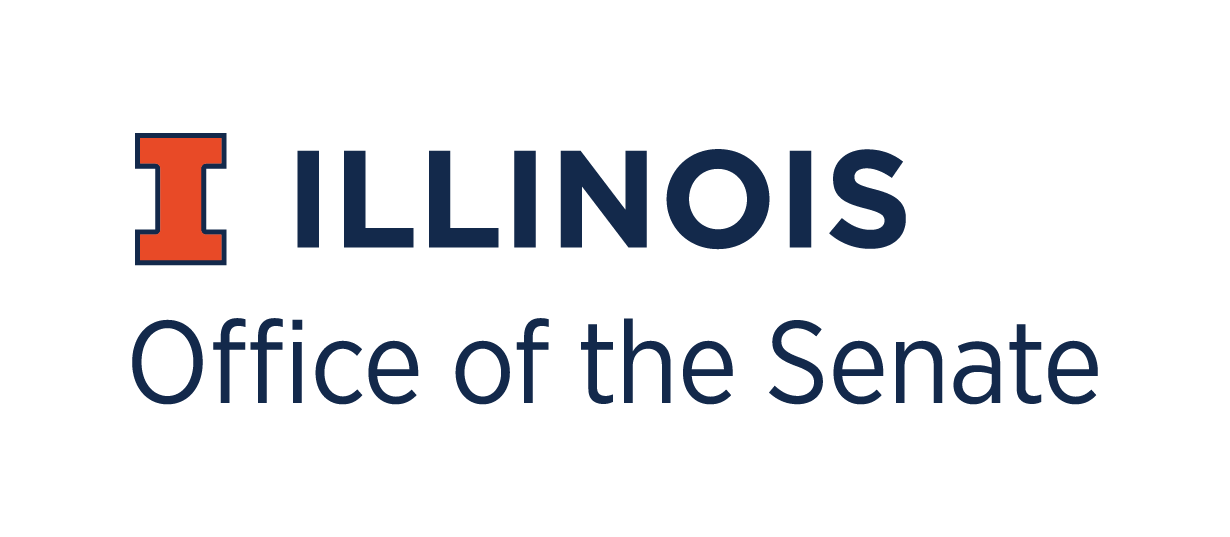HE.07.05
February 19, 2007
University of Illinois
Urbana-Champaign Senate
Final;Information
HE.07.05 Report on the Illinois Board of Higher Education Meeting, December 5, 2006.
Item specific to UIUC: In his opening statement Chairman Kaplan commented on the ethnic slurs tied to a recent campus fraternity/sorority event. He is concerned that “sensitivity is not filtering down to the students.” He invoked The Illinois Commitment and a focus on inclusiveness and the need to do more to foster the goal of inclusiveness through possible Board actions.
The BHE met at the Harold Washington College in Chicago. Chancellor Wayne Watson of the City Colleges of Chicago welcomed the group, noting a 9% increase in enrollment and the need for more capital spending to meet CCC needs. Many students are dual enrolled in community colleges and public and private colleges. President John Wozniak of Harold Washington College noted that the College had 7,000 students in the liberal arts transfer program.
Chair Kaplan congratulated Larry Matejka for his service to Illinois and students thru the ISSAC program and prior service including that at the U of I. Executive Director Erwin commented on tuition reciprocity that has been under study for more than a year, grants for critical nursing faculty (none at the U of I), and continuing work on the textbook cost study of interest to the legislature and governor.
Curtis White reported on behalf of the Faculty Advisory Council. He summarized a report on teacher preparation that focused on strengthening standards to ensure quality instruction. He noted the tendency for less qualified and less experienced teachers to be assigned to school districts that in turn produce less qualified graduates. While many student quality differences are tied to issues that cannot be solved by better teaching, some can be. Teachers should have a strong major, increased preparation requirements and earn at least a B average.
The representative of the student advisory group introduced the student to be added to voting board membership at the February meeting to represent non-traditional students. The community college representative spoke to the need to increase access by restructuring the student aid system and reduce student debt saying 2/3rds of students enter higher ed via community colleges.
Dr. Michael McPherson, President of Spencer Foundation, was the featured speaker. The foundation focuses on higher ed with a focus on developing new knowledge through research on learning. Stressing the need to look at old issues in new ways he addressed the questions of costs in higher education. He began by asking, “What is a cost?” Is it the resources used, the price, or a subsidy? While the price (tuition) of higher education in public education is rising rapidly, the actual costs are fairly steady. But the subsidy provided by the state is declining so students and family are being hit by higher charges. It is hard to get valid data on private colleges and getting harder to get the data from public institutions. About 80% of college students go to public institutions. Costs rose about 2% a year in the 1980’s and a little faster in the 1990’s. While costs grew at about the level of increases in national income, state subsidies (appropriations) to public institutions declined so family/student payments rose--clearly a case of cost shifting. The costs of higher education have not risen disproportionally; the issue is the shift in funding sources.
McPherson said higher ed is not designed for cost containment and efficiency. Need to balance safeguards such as academic freedom and shared governance central to the long-term quality of higher ed. Tenure aims to limit administrative power—a constraint there for a reason. Huge long-range value to academic freedom but short-term costs. Faculty need to know the economic reality facing the individual college before not after a crisis. Flagship universities and community colleges face very different per student costs.
He noted that external fundraising drives costs higher. Fluctuations in support during recessions vs. boom times cause significant difficulties. Nationally, state support for higher education as a share of state expenditures has fallen from about 8.5% in 1980 to about 5.25% in 2000.
The Board moved rapidly through the remainder of the agenda including approval of new units of instruction and operating degree authority. Participation in the Midwest Student Exchange Program was approved and Executive Director Erwin authorized to pursue bilateral agreements as they arise. It is believed funds will become available to support the MAP+ program authorized last spring by the legislature. Dates of future meetings and reports on fall enrollments and 12-month headcounts for 2004-05 are on the BHE website.
The next meeting is February 6 in Springfield.
Ken Andersen
FAC to the IBHE Representative
